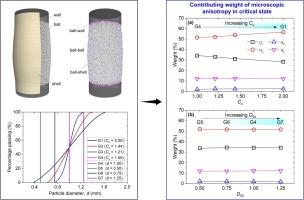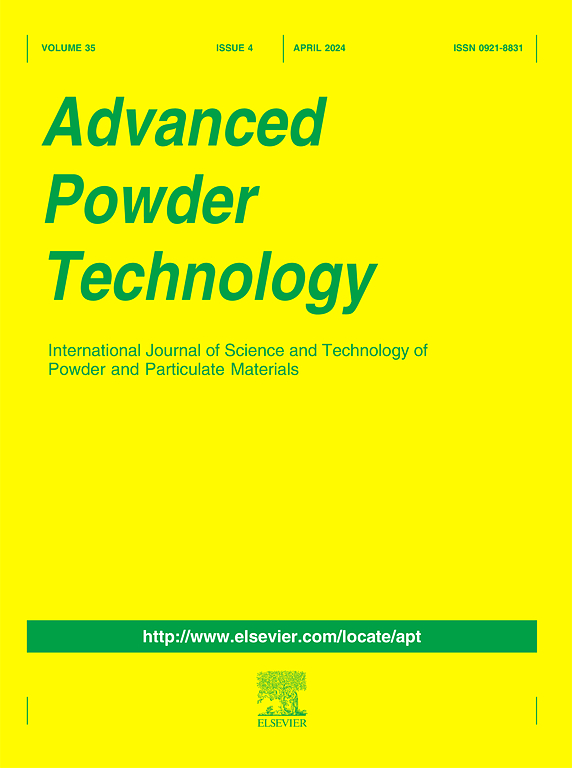DEM investigation of particle gradation effect on the stress-dilatancy behavior of granular soil
IF 4.2
2区 工程技术
Q2 ENGINEERING, CHEMICAL
引用次数: 0
Abstract
Particle gradation effect on the shear-dilatancy of granular soils was studied through a series of drained triaxial tests using the discrete element and finite difference methods (PFC3D-FLAC3D). Spherical particles with different coefficients of uniformity Cu and median particle sizes D50 were assembled to exclude the strong size-shape correlation in natural sands. Four groups of Cu and four groups of D50 at the same void ratio ec prior to shearing, and seven more groups with the same void ratio e0 prior to isotropic compression were tested. Various mechanical behaviors were analyzed, including the stress–strain response, the stress-dilatancy response, friction angle, and fabric anisotropy. Cu significantly influences the peak friction angle, the maximum dilation angle, and the anisotropies of normal contact force and contact normal, whereas these are almost independent of D50. The contribution of the maximum rate of dilation to the excess friction angle is largely independent of Cu and D50 for spherical particles.

颗粒级配对粒状土应力-膨胀行为影响的 DEM 研究
利用离散元和有限差分方法(PFC3D-FLAC3D),通过一系列排水三轴试验研究了颗粒级配对粒状土剪切膨胀性的影响。试验采用不同均匀系数 Cu 和中值粒径 D50 的球形颗粒,以排除天然砂中粒径-形状的强烈相关性。在剪切前测试了四组空隙率 ec 相同的 Cu 和四组 D50,在各向同性压缩前又测试了七组空隙率 e0 相同的 Cu 和 D50。分析了各种力学行为,包括应力-应变响应、应力-膨胀响应、摩擦角和织物各向异性。铜对峰值摩擦角、最大扩张角以及法向接触力和接触法线的各向异性有很大影响,而这些因素几乎与 D50 无关。对于球形颗粒而言,最大扩张率对过大摩擦角的贡献在很大程度上与铜和 D50 无关。
本文章由计算机程序翻译,如有差异,请以英文原文为准。
求助全文
约1分钟内获得全文
求助全文
来源期刊

Advanced Powder Technology
工程技术-工程:化工
CiteScore
9.50
自引率
7.70%
发文量
424
审稿时长
55 days
期刊介绍:
The aim of Advanced Powder Technology is to meet the demand for an international journal that integrates all aspects of science and technology research on powder and particulate materials. The journal fulfills this purpose by publishing original research papers, rapid communications, reviews, and translated articles by prominent researchers worldwide.
The editorial work of Advanced Powder Technology, which was founded as the International Journal of the Society of Powder Technology, Japan, is now shared by distinguished board members, who operate in a unique framework designed to respond to the increasing global demand for articles on not only powder and particles, but also on various materials produced from them.
Advanced Powder Technology covers various areas, but a discussion of powder and particles is required in articles. Topics include: Production of powder and particulate materials in gases and liquids(nanoparticles, fine ceramics, pharmaceuticals, novel functional materials, etc.); Aerosol and colloidal processing; Powder and particle characterization; Dynamics and phenomena; Calculation and simulation (CFD, DEM, Monte Carlo method, population balance, etc.); Measurement and control of powder processes; Particle modification; Comminution; Powder handling and operations (storage, transport, granulation, separation, fluidization, etc.)
 求助内容:
求助内容: 应助结果提醒方式:
应助结果提醒方式:


